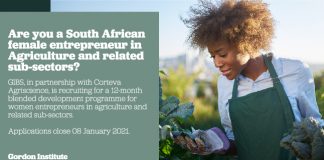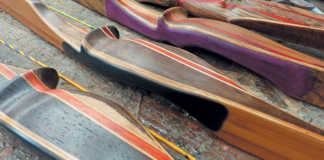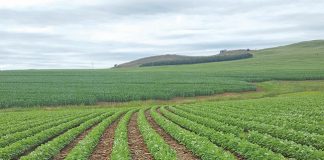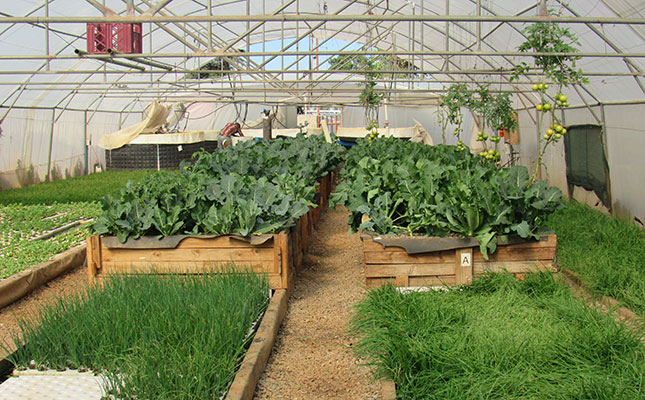
Photo: Siyanda Sishuba
Enslin Aquaponics in Midrand was established in 2004 by leading aquaponics researcher Barry Enslin. When he retired in 2015, the business was taken over by Justin Hess and his wife, Nikki, and became Ichthys Aquaponics.
The couple continued much of the research started by Enslin. In 2017, they were joined by Hein Oosthuizen, who became the facility’s technical director.
The farm produces trout and tilapia, as well as herbs, tomatoes and baby spinach, which are sold to local supermarkets. The tilapia are sold to Food Lover’s Market and the trout to local restaurants.
The business, which employs eight permanent staff members, also sells aquaponics equipment and provides advisory services.
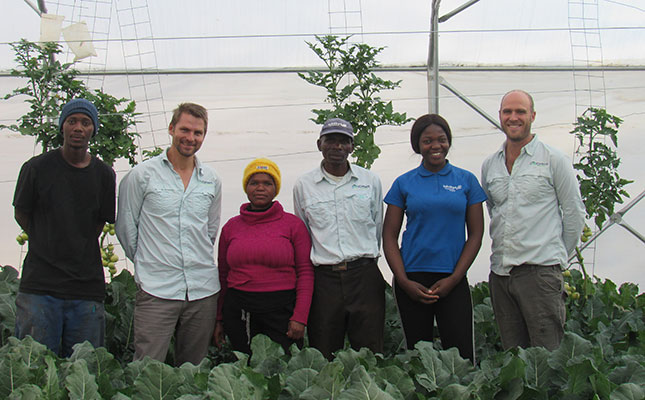
When the Hesses purchased the farm, it consisted of one tunnel, which is still in use. In 2016, they bought 1ha next to the tunnel with the aim of expanding the aquaponics operation.
“Aquaponics producers tend to operate on a smaller scale,” says Hess.
“This may be because of limited funding for capital investments, space limitation in urban settings, or few lucrative sales outlets. We wanted to challenge aquaponics norms and the way the technologies in aquaponics are used to create opportunities for scaling up.
“We decided to change our system design first to optimise space. This allowed us to increase production without increasing input costs.”
New tunnels
Learning how to reduce production costs was step one. Once they had sufficient experience, the couple started to expand the business by installing two new tunnels in 2017. These are designed for tilapia, which prefer warmer water.
In 2018 and 2019, the Hesses installed five more tunnels for trout, which prefer cooler temperatures.
“The new tunnels are made of plastic,” says Hess. “They have higher roofs and roll-up sides for ventilation, which enables us to save money on temperature control.”
They have also been equipped with geothermal heating and cooling technology to maintain a constant temperature. Each tunnel has four to six fish tanks.
“The new system allows water and nutrients from the vegetables to flow back into the fish tank more efficiently. The improvements we’ve made to the system allow us to increase production by as much as four times over the same period.”
Another change was to move the tanks holding the trout outside the tunnels; this enables them to grow more crops inside.
The farm produces Nile tilapia (Oreochromis niloticus) and redbreast kurper (Tilapia rendalli). The former is indigenous to Central and North Africa and the Middle East.
In South Africa it has been declared a Category 1b species, according to the National Environmental Management: Biodiversity Act of 2004, meaning that it is a widespread and troublesome species that requires control.
The Department of Environmental Affairs (DEA) has placed a moratorium on farming Nile tilapia in Limpopo, Mpumalanga and KwaZulu-Natal. To farm Nile tilapia in one of the other provinces, however, producers have to apply for a permit through the DEA.
The tilapia tanks at Ichthys Aquaponics have a 5 000ℓ capacity and are stocked at a rate of 25kg/1 000ℓ. The trout tanks have a 10 000ℓ capacity and are stocked at about 20kg/1 000ℓ.
The fry are fed five times a day by simply tossing a handful of feed into the tanks. If they are still eating after five minutes, another handful of feed is thrown in. At the juvenile stage, the Nile tilapia are fed mostly pellets, while T. rendalli receive leafy greens.
Bucking the trend
According to Hess, many people are reluctant to farm trout as it is a very fragile fish. If the air pumps in the tanks are down for just 30 minutes, due to a power outage, for example, the fish can die.
This makes it essential to have back-up power for all water and air pumps.
Ichthys Aquaponics produces more than a ton of fish a month, mostly trout.
Hess explains that at one stage, it was common wisdom that trout could not be grown in Johannesburg as the ambient temperature drops too low, especially in winter.
“But we’ve proved it can be done, and we’ve developed simple technology specifically for trout to maintain more consistent water temperature throughout the year.”
The temperature in the trout tanks is kept between 12°C and 25°C, while tilapia require 25°C to 30°C.
“We grow twice the amount of trout as we do tilapia,” says Hess.
“In the same time it takes us to get the tilapia to 500g, we can get the trout to 1kg.
“We’re also getting 50% more per kilogram for the trout than we do for tilapia, with tilapia selling for about R65/ kg and trout for R100/kg.”
Vegetable production
The farm uses four methods of growing vegetables: deep water culture; flood and drain; Dutch buckets; and vertical towers.
“We developed our own vertical growing method,” explains Hess. “The growing ‘towers’ are fed water from the system, which is applied directly to plants. This allows us to make optimal use of space.”
The Dutch bucket system is one of the easiest indoor aquaculture or hydroponic growing systems to implement. As the name suggests, it uses individual buckets, filled with growing medium, connected to the fish tanks via an irrigation system.
Multiple buckets can be connected in series to the fish tanks via a central line. The water is pumped into each bucket, then allowed to drain back into the central line, which feeds water back to the fish tanks to be recycled.
Deep water
In a deep-water culture system, the crops are planted inside net cups inserted into holes in polystyrene sheets floating on water troughs approximately 30cm deep. The plants can either be grown here until harvest or transplanted to the media beds.
The beds contain soilless media, such as gravel, and are used to grow crops with a flood-and-drain irrigation method.
Hess recalls that when they started, it cost about R2 500/ m2 to build a square metre of aquaponics system. Today, it costs about R450/m2. Costs have been reduced by using cheaper materials where possible.
For example, high-density IsoBoards can carry more plants than polystyrene boards can.
Business aquaponics
“Polystyrene is used for plants that grow straight and don’t need transplanting,” explains Hess.
“Plants that will grow bigger and need to be transplanted are planted in IsoBoards and then transplanted to gravel beds.”
Before changing the design, only 40% of the space inside the greenhouse tunnels was used for growing vegetables; this has now been increased to more than 90%.
“We’re running on a quarter of the electricity that we used when we started, and most of our power is now derived from a solar installation.”
Future plans
To further optimise output efficiency, the Hesses grow mostly high-value crops such as herbs.
They have decreased the amount of lettuce, cauliflower and broccoli being grown, as these take up a great deal of space and do not necessarily achieve the same return per square metre as do basil, chives and spring onion.
Ultimately, it comes down to maximising profit per square metre, says Hess.
“In that square metre, we need to earn R100 from crops planted. If we have 25 lettuces in that space, we need to receive R4 a lettuce to make a profit.
“Over the past two years, we’ve spent a lot of time developing our production methods and we’re confident about expanding,” he adds.
The next goal is to set up a farm of between 30ha and 40ha. The Hesses are also experimenting with other species of fish.
Phone Ichthys Aquaponics on 010 065 0776 or 081 009 5368.









